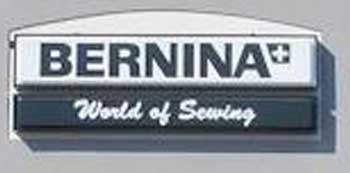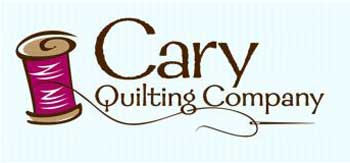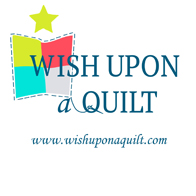Paula Nadelstern

October 18-19, 2013
Highland United Methodist Church
9:00 am-3:30 pm
Our teacher in October is Paula Nadelstern.
Friday, Oct 18th: Simply Symmetry
More information and supply list posted on Connecting Threads.
Supplies (* ALL supplies with an asterik will be available for purchase in class)
| *1. Sheets of see-thru plastic template material with or without grid |
| *2. Extra fine-point permanent marker. Ex: Pilot7 Extra Fine Point Permanent Marker, SCA-UF |
| *3. Method to mark dark fabric. My preference: light-colored (ex: silver), extra fine-point permanent gel pen. |
| 4. Fabric scissor |
| 5. Template/paper scissors |
| 6. Set-up for rotary cutting, including a rotary cutter, ruler and mat |
| 7. Sewing machine with well-defined quarter-inch seam allowance guide |
| 8. General sewing supplies including black or dark thread |
| 9. Ziplock baggies to hold templates and patches |
Fabric (When possible, appropriate fabric will be available for sale in class)
The featured fabric must be a multi-colored, bilaterally symmetrical cotton fabric with multiple repeats. The more colorful, the better (meaning, the more different colors used in the print, ie: a fabric printed with 12 colors gets better results than one with 5 colors), A bilaterally symmetrical motif can be divided into identical halves by a line passing through the center. When the pattern on one side of the line is flipped over along this line and superimposed on the other side, the match is identical. View examples of Dragon Feathers, Chorus Line or Hillsand Valley from the Patternista collection by Paula Nadelstern for Benartex at www.paulanadelstern.com. Yardage requirements depend on chosen lay-out by each student. Dragon Feathers is a large repeat and may need 2 1/2 yards. Note: The quilt will not be finished in the one day class. Therefore, you don’t have to bring fabric for lattice and accent to class.
| Yardage Requirements For Small Quilt, 32″ x 54″ |
|
| Fabric A: Featured Fabric: | 2 yards |
| Fabric A: Backing (includes 9″ for a 4″ sleeve): |
2 yards (used Featured Fabric) |
| Fabric B: Sashing fabric and binding: | 1 1/2 yards |
| Fabric C: Accent border: | 1/2 yard |
Yardage Requirements For Large Quilt, 49″ x 49″ |
|
| Fabric A: Featured Fabric: | 3 yards |
| Fabric A: Backing (includes 9″ for a 4″ sleeve): |
3 1/2 yards (used Featured Fabric) |
| Fabric B: Sashing fabric and binding: | 1 1/2 yards |
| Fabric C: Accent border: | 2/3 yard |
Saturday, Oct 19th: Kaleidoscope Class
More information and supply list posted on Connecting Threads.
This class is the first day of my multi-day kaleidoscope workshop and is both a process and product class. Students learn all of the unique machine piecing and template techniques I use to create a complex kaleidoscopic image while simultaneously exploring the virtues of bilaterally symmetrical fabric. Needlestars© is a 4-patch block reminiscent of a kaleidoscopic pinwheel.
Guild program chairperson can inquire about a kit for each student including graph paper, template plastic package, ruler, and marking pen set for templates; $12 more if kit includes one yard of bilaterally symmetrical fabric (student will have choice between 3 or more colorways).
| 1. Graph paper with an eight-to-the-inch grid and a bold inch line; one sheet per student will be provided by instructor. |
| *2. Sheets of see-thru plastic template material with an eight-to-the-inch grid and a bold inch line. PREFERRED AND AVAILABLE FOR SALE IN CLASS : Visi-Grid (C&T Publisher) |
| 3. Thin rulers (PREFERRED AND AVAILABLE FOR SALE IN CLASS: C-Thru 6″)
4. Sharp pencils with ample and accessible erasers |
| *5. Extra fine-point permanent marker. (PREFERRED AND AVAILABLE FOR SALE IN CLASS: Multimark S/Faber Castell in a 3 pen set) |
| *6. Method to mark dark fabric. *PREFERRED AND AVAILABLE FOR SALE IN CLASS: Uniball Silver Gel Pen) |
| 6. Fabric scissor |
| 7. Template/paper scissors: A template scissor should not be the discarded kitchen shears or shaped for a five-year-old’s hand. It is the essential, indispensible tool from which all other acts follow. I use OlfasCS-1 multipurpose scissors. |
| 8. Set-up for rotary cutting, including a rotary cutter, ruler and mat. OPTIONAL: Small rotary cutter and Brooklyn Revolver (cutting mat mounted on a lazy susan) |
| 9. Sewing machine with well-defined quarter-inch seam allowance guide + single hole throat plate |
| 10. General sewing supplies including fine pins and black thread |
| 11. Ziplock baggies to hold templates |
Fabric
The success of NEEDLESTARS depends on choosing a bilaterally symmetrical fabric. A motif with bilateral symmetry can be divided into identical halves by a line passing through the center.
Note: Patches A+C are cut from the same bilaterally symmetrical fabric. Patches D+E are cut from the same allover fabric that functions as the background and is often a rich, dark (or black) reads-like-a-solid-but-isn’t fabric. Patch B is cut from a different allover fabric and should contrast sharply with Fabric A in order to stand out and emphasize the shape of the “needle.” In other words, DO NOT PICK A FABRIC FOR B THAT MATCHES YOUR A FABRIC. It is best to audition Patch B in class so bring a variety of small to medium all-over prints evoke luminosity or translucence, textures, gradations, splattered dots, stuff speckled with gold or thin stripes. Painterly batiks are also good. Be outrageous in your B choices, bring stuff that clashes with A.
| Yardage Requirements for Single Block Made in Class 10″ x 10″ |
|
| Fabric A+C: Bilaterally Symmetrical Fabric: | 1 yard |
| Fabric B: The Needle: | 1/2 yard |
| Fabric D+E: Background: | 1/2 yard |
November 21-22, 2013
Highland United Methodist Church
9am-3:30pm
Micky Depre
Our teacher in November is Mickey Depre
Friday, Nov 21st: Modular Stew Class
More information and supply list posted on Connecting Threads.
Saturday, Nov 22nd: Charm Pack Wildflowers Class
More information and supply list posted on Connecting Threads.




